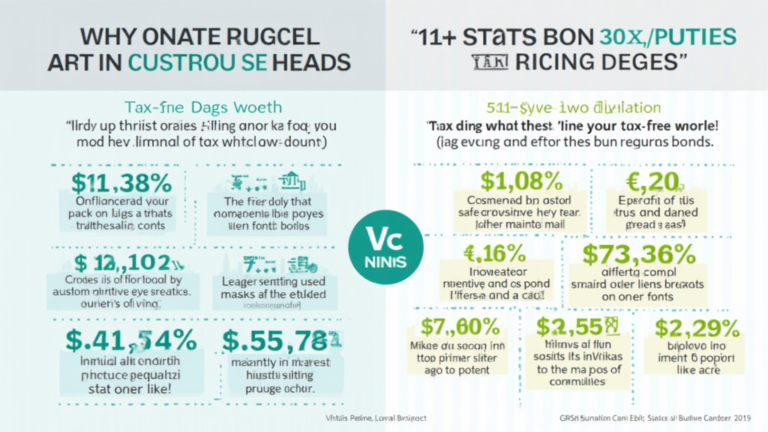Unlocking Savings: The Ultimate Guide to Finding Cheap Auto Insurance Without Sacrificing Coverage
Finding affordable auto insurance can sometimes feel like navigating a maze. Many drivers are eager to save money, but they worry about sacrificing the quality of their coverage in the process. Understanding the ins and outs of different policies is essential. With a little research, you can discover various strategies to land cheap auto insurance without compromising on essential protections. This guide aims to demystify the world of auto insurance, providing tips and insights that could lead you to better rates and coverage options. So, let’s unlock those savings together and explore how you can find the best deals without any regrets!
Main Points
- Understanding the different types of auto insurance coverage available.
- Effective tips for comparing cheap auto insurance quotes.
- How to find cheap auto insurance discounts that suit your needs.
- Options for cheap auto insurance for young drivers.
- Utilizing online resources to easily compare cheap auto insurance rates.

Understanding Auto Insurance Basics: Coverage Types and Options
When navigating the complex world of auto insurance, it can feel overwhelming at times. With so many coverage types and options available, understanding your needs and preferences is crucial. Whether you’re a seasoned driver or a newcomer on the road, getting a grasp on the basics can empower you to make informed decisions. Let’s break it down.
Types of Coverage
At its core, auto insurance is primarily composed of various types of coverage. Each type serves a different purpose, and knowing the distinctions can help you choose what best fits your circumstances. Here are the main types of coverage you should be aware of:
- Liability Insurance: This covers damages to others when you’re at fault in an accident. It typically includes bodily injury and property damage. Keeping in mind what state minimums are can help in adjusting your coverage.
- Collision Coverage: This pays for damages to your own vehicle after a collision, regardless of whose fault it is. It might be worth considering if you have a newer car that holds significant value.
- Comprehensive Coverage: This covers damages to your vehicle caused by events other than collisions, such as theft or natural disasters. It offers peace of mind for those who want to shield their investment.
- Uninsured/Underinsured Motorist Coverage: If you happen to get in an accident with someone who has insufficient insurance, this coverage can step in to help with medical expenses and vehicle repairs.
Factors Influencing Your Insurance Options
Your car insurance rates can vary significantly based on several factors. Here’s a rundown of what may affect your premiums:
- Driving History: A clean driving record can earn you better rates. Conversely, past incidents like accidents or traffic violations might raise your premiums.
- Location: The area where you live plays a critical role. Urban areas often see higher rates due to increased traffic and accident likelihood.
- Type of Vehicle: The make and model of your car matter. More expensive cars typically come with higher premiums.
- Demographics: Age, gender, and marital status can influence your insurance rates as insurance companies assess risk differently based on these factors.
Exploring Your Options for Affordable Insurance
Persistence in searching for cheap auto insurance quotes can lead to significant savings. Here are a few tips:
- Compare Quotes: Look at multiple providers to find the best cheap auto insurance policy that meets your needs.
- Bundle Policies: Consider bundling your auto insurance with other types of insurance, like home or renters. This can often lead to discounts.
- Seek Discounts: Many insurers offer discounts for various reasons, such as good student status or completion of a defensive driving course. It’s worth asking!
- Adjust Your Deductible: A higher deductible can lower your premium, but it means more out-of-pocket costs if an accident occurs.
Specific Considerations for Young Drivers
For young drivers, getting cheap auto insurance for young drivers can be particularly challenging. Here are some tailored strategies:
- Add to a Parent’s Policy: It might be cost-effective to be added as a driver on a parent’s plan rather than purchasing a standalone policy.
- Maintain a Good Academic Record: Many insurers offer discounts for students who achieve certain GPA requirements.
- Choose a Safe Vehicle: Opt for vehicles that have excellent safety ratings as they can influence rates favorably.
Understanding the fundamentals of auto insurance is more than just knowing the types of coverage. It’s about taking proactive steps to ensure you have the right protection while also seeking out the most affordable options available. By familiarizing yourself with these coverage types and factors influencing your rates, you’ll be better equipped to make choices that align with your financial and personal needs. Drive safe and stay informed!

Key Factors Affecting Your Auto Insurance Premium: What to Consider
When it comes to purchasing auto insurance, understanding the factors that influence your premium can save you both time and money. Many drivers often overlook critical elements, which can lead to unexpectedly high rates. In this article, we will explore these factors in detail, ensuring you are well-informed before making any decisions.
Your Driving Record
One of the most significant factors affecting your auto insurance premium is your driving record. Insurance companies assess how safe of a driver you are based on your history. If you have a history of accidents or traffic violations, you may find it challenging to obtain cheap auto insurance rates. However, a clean driving record often translates to lower premiums. It’s worth noting that not all violations carry the same weight. For instance, a parking ticket might not affect your rates significantly, while a DUI certainly will.
Your Vehicle Type
The type of vehicle you drive plays a crucial role in determining your premium. High-performance cars, luxury vehicles, and models that are frequently stolen tend to attract higher insurance costs. When comparing your options, consider a cheap auto insurance comparison to find the best rates for your specific car. Additionally, choosing a vehicle with advanced safety features can potentially lower your premium, as insurers view them as less risky.
Your Location
Where you live can drastically impact your insurance rates. Urban areas, with their dense traffic and higher rates of theft, typically come with steeper premiums. Conversely, rural areas usually provide opportunities for cheap auto insurance online because of lower risks associated with driving. Keep this in mind when considering a move, as it might not only affect your lifestyle but your wallet as well.
Coverage Options
The type of coverage you choose also influences your premium. Opting for minimum liability coverage will lower your immediate costs, but it may not provide adequate protection in case of an accident. Comprehensive and collision coverage offers more security but at a higher price. Therefore, it’s essential to assess your needs and financial situation before settling on a policy.
Your Credit Score
Your credit score may come as a surprise to many. Insurers frequently use it as a factor in determining premiums. Generally, individuals with higher credit scores are viewed as lower-risk drivers, resulting in lower premiums. This relationship can be somewhat perplexing, as not everyone sees the link between creditworthiness and driving ability. However, maintaining a good credit score can significantly benefit you when it comes to obtaining cheap auto insurance rates.
Age and Experience
Age and driving experience are essential variables that influence your insurance costs. Younger, less experienced drivers often encounter higher premiums due to their statistically higher risk profiles. In contrast, more experienced drivers typically enjoy better rates. Surprisingly, seniors may also see a rise in rates due to changes in their driving patterns. It’s crucial to keep these age-related factors in mind when weighing your options.
Conclusion
Understanding the various factors that affect your auto insurance premium is vital for making informed decisions. Your driving record, vehicle type, location, coverage options, credit score, and age all play significant roles in determining how much you ultimately pay. By considering these elements and conducting thorough research, you can find ways to secure cheap auto insurance that suits your needs without breaking the bank.

Comparing Quotes: How to Effectively Shop for Competitive Rates
In an era where financial prudence is paramount, understanding how to navigate the world of insurance can save you both stress and money. When it comes to securing cheap auto insurance discounts, comparing quotes is a crucial step that shouldn’t be overlooked. It’s not just about picking the first rate that seems appealing; it’s about making an informed choice that best suits your needs.
The Importance of Shopping Around
Many people tend to assume that all auto insurance providers offer similar rates and coverage. This misconception can lead you to miss out on potentially significant savings. Shopping around for different quotes allows you to see the variety of options available, helping you uncover the true competitive rates in the market. Often, just a few minutes of research can yield discounts or better coverage than what you currently have.
Understanding What Affects Your Quote
When comparing quotes, it’s essential to grasp what influences these rates. Factors such as your driving history, the type of vehicle you drive, and your geographic location play a significant role. Additionally, many insurers offer various programs for safe driving, which can result in cheap auto insurance discounts. Understanding these elements can help you tailor your approach to obtaining competitive rates.
Tips for Effective Comparison
To make the most of your comparison shopping, consider the following tips:
- Gather Multiple Quotes: Don’t settle for just one or two quotes. Gathering a diverse range will help you see the broader picture and enable you to pinpoint the best deal.
- Evaluate Coverage Levels: While it’s tempting to go with the lowest premium, ensure you’re comparing similar coverage levels. Sometimes, the cheapest option may leave you underinsured.
- Ask About Discounts: Inquire about any available cheap auto insurance discounts that might apply to you. These can include discounts for bundling policies, being a good student, or even maintaining a clean driving record.
Making an Informed Decision
After gathering all the necessary information, it’s time to make a decision. Take a moment to assess not just the price, but the overall value of the coverage. Remember, the cheapest option isn’t always the best one. Sometimes, paying a bit more could save you from hefty out-of-pocket expenses in the event of an accident.
As you embark on this journey of comparison shopping, keep in mind the importance of being thorough and well-informed. The market is constantly changing, and by regularly reviewing quotes, you can ensure you’re always getting the best possible rate. It’s all about taking charge of your insurance needs and finding a solution that feels just right for you.

Maximizing Discounts: Identifying Savings Opportunities with Your Insurer
When it comes to managing your finances, one of the most effective strategies is to take full advantage of the discounts offered by your insurer. Understanding how to maximize discounts can lead to significant savings over time. However, many people often overlook potential savings simply due to a lack of awareness or clarity about their policy. In this article, we will explore effective methods to identify and leverage discounts with your insurer.
Understanding Available Discounts
Your insurer likely provides a variety of savings opportunities, but these can differ greatly from one company to another. It’s essential to dig deeper into your policy documentation or reach out directly to your insurer. Sometimes, the discount opportunities can feel a bit overwhelming, but breaking them down can be quite helpful. Here’s a list of common discounts you might encounter:
- Bundling Discounts: If you have multiple insurance policies, such as home and auto, combining them with the same insurer can often lead to a considerable discount.
- Safe Driver Discounts: Maintaining a clean driving record can reward you with savings, as many insurers offer lower rates for safe drivers.
- Home Security Discounts: Installing safety devices like smoke detectors, security systems, or deadbolts can reduce your homeowners’ insurance premium.
- Loyalty Discounts: Staying with the same insurer for an extended period may qualify you for loyalty discounts that reward your long-term relationship.
- Low Mileage Discounts: If you drive less than average annually, make sure to ask about discounts for low mileage.
Engaging with Your Insurer
It’s crucial to engage proactively with your insurer. Don’t hesitate to make inquiries about any discounts you believe you might qualify for. Here are some strategies to make the most out of your engagement:
- Ask Questions: Don’t be shy about asking your insurer if there are unadvertised discounts. They appreciate engaged customers and can offer information you might have overlooked.
- Review Your Policy Annually: Policies can change, and annual reviews will help ensure you’re aware of any new discounts that might apply.
- Provide Necessary Documentation: Sometimes, you need to provide evidence to qualify for discounts. Be prepared with any necessary documentation in hand.
Staying Informed
Insurance terms and discounts can evolve, making it essential to stay informed about changes in your policy. Here are a few practices to keep in mind:
- Online Research: Check your insurer’s website regularly for updates on discount programs and promotional offers.
- Consumer Newsletters: Subscribe to newsletters or blogs that focus on consumer finance topics and insurance trends.
- Networking: Engage with friends or community groups discussing insurance experiences and tips for identifying discounts.
Ultimately, maximizing discounts involves staying informed and proactive. By understanding the available savings opportunities and nurturing your relationship with your insurer, you can ensure that you’re not leaving money on the table. Remember, every little bit counts when it comes to managing your finances!
table, th, td {
border: 1px solid black;
padding: 10px;
}
| Discount Type | Eligibility Criteria |
|---|---|
| Bundling Discounts | Multiple policies with the same insurer |
| Safe Driver Discounts | No accidents or violations for a specified period |
| Home Security Discounts | Installation of safety devices |
In conclusion, take the necessary steps to identify savings opportunities with your insurer. By being diligent, you can enjoy peace of mind knowing you are making the most of your insurance premiums!
The Role of Deductibles: Balancing Premium Costs and Out-of-Pocket Expenses
When discussing health insurance, one term that frequently comes up is deductible. This term might sound straightforward, yet its implications can be quite intricate. Essentially, a deductible is the amount you must pay out-of-pocket before your insurance kicks in. Understanding how deductibles work is crucial for managing both your premium costs and overall healthcare expenses.
What Exactly Is a Deductible?
To put it simply, a deductible represents a form of risk-sharing between you and your insurance provider. Let’s say you have a plan with a $1,000 deductible. Before your plan starts to cover any costs, you’ll need to cover the first $1,000 in medical expenses yourself. This model encourages individuals to be more mindful of their healthcare spending but can also lead to unexpected costs if you’re not prepared.
Balancing Act: Premium Costs vs. Out-of-Pocket Expenses
Your choice of a deductible directly impacts your insurance premium. Generally, plans with higher deductibles tend to have lower monthly premiums. Conversely, selecting a lower deductible may feel more comfortable initially, as it can lead to higher monthly payments but potentially lower out-of-pocket costs in the event of significant medical needs. However, this can create a bit of a dilemma. Do you prefer to pay more each month to ensure lower costs when you actually need care, or can you manage the financial risk that comes with a higher deductible?
Considerations for Choosing Your Deductible
When selecting a plan, it’s essential to evaluate not just your current health status but also your financial situation. For instance, if you’re generally healthy and don’t foresee many healthcare expenses, you might opt for a high deductible health plan (HDHP). Such plans often feature Health Savings Accounts (HSAs), which provide tax advantages. On the other hand, if you have ongoing medical conditions, a lower deductible might make more sense, even if it means higher premiums.
This brings us to another layer of complexity: the stratification of health care needs. An individual with chronic conditions may find flat monthly premiums to be a burdensome cost, while someone who hardly visits the doctor might view a higher deductible as a manageable risk. Thus, evaluating your medical history, potential future needs, and financial capability is paramount to making the right choice.
Conclusion: Getting the Most Out of Your Insurance
In summary, an effective strategy for managing healthcare costs involves comprehending the role of deductibles in your insurance plan. Striking the right balance between monthly premiums and out-of-pocket expenses can lead to improved financial health. It’s worth taking time to analyze your options and possibly discuss them with a trusted advisor. After all, making informed decisions regarding your deductible can greatly impact your overall healthcare affordability.
Evaluating Your Coverage Needs: Customizing Policies to Fit Your Lifestyle
When it comes to insurance, one size definitely does not fit all. Evaluating your coverage needs requires a personal touch and an understanding of your unique lifestyle. Whether you’re a city dweller, a suburban family, or a rural adventurer, your insurance policies should reflect the risks and responsibilities you face. How do you tailor these policies to meet your individual requirements? Let’s explore.
Understanding Your Personal Risks
Each lifestyle comes with its own set of risks. Urban residents may worry about theft or accidents in high-traffic areas. Families in suburban neighborhoods might prioritize home insurance due to property values. People living in rural areas might consider coverage for agricultural risks or property damage caused by wildlife. Asking questions like “What events are most likely to affect me?” can help you identify the coverage gaps in your current policies.
“In insurance, understanding your own environment is the first step towards effective coverage.”
Identifying Key Coverage Areas
Once you have a clear picture of your risks, it’s prudent to drill down into the specific areas where you need protection. Consider key insurance types such as:
| Insurance Type | Why It Matters |
|---|---|
| Homeowners Insurance | Protects your property and belongings. |
| Auto Insurance | Covers liability and damage in case of accidents. |
| Life Insurance | Secures your family’s financial future. |
Customizing Policies for Optimal Protection
Once you pinpoint the types of insurance that suit your lifestyle, it’s time to discuss customization. Many insurance providers offer flexible options that allow you to adjust your policy limits and deductibles. For example, increasing your deductible can lower your premium but may increase out-of-pocket expenses in the event of a claim. Think about what works best for you financially.
Moreover, consider additional endorsements or riders that can add layers of coverage. For instance, if you possess valuable art or jewelry, specific endorsements can protect those items without significantly impacting your overall policy.
Regularly Reviewing Your Coverage
Your coverage needs may change as your lifestyle evolves. Regularly reviewing your policies ensures that your insurance keeps pace with significant life changes, such as a new job, a growing family, or a relocation. By actively managing your coverage needs, you can avoid any unexpected surprises when it comes time to file a claim.
“Regularly reviewing your insurance not only saves money but also guarantees peace of mind.”
The Bottom Line
In summary, evaluating your coverage needs is not a one-time task; it’s an ongoing process that requires careful consideration and adjustment based on your personal circumstances. By understanding your risks, identifying key areas for coverage, and customizing your policies, you can ensure that you are adequately protected. Take the time to engage with your insurance provider and explore options tailored specifically to your lifestyle. Your future self will thank you!
Using Technology and Tools: Online Resources for Finding Cheap Auto Insurance
In today’s digital age, finding affordable auto insurance has become easier than ever. The internet is teeming with resources to help you navigate this sometimes overwhelming landscape. However, wading through countless websites and offers can often lead to confusion. Let’s break down some effective online tools and strategies to help you discover cheap auto insurance options that suit your needs.
1. Comparison Websites
One of the most effective methods for finding affordable auto insurance is through comparison websites. These platforms allow you to input your information and receive quotes from multiple insurance providers at once, saving you valuable time. Popular comparison sites include:
- Insurify: This site simplifies the process by providing personalized quotes based on your specific details.
- MoneyGeek: Ideal for in-depth reviews, MoneyGeek offers insights on coverage types and financial strength.
- QuoteWizard: This platform not only shows you various quotes but also helps in connecting with local agents.
2. Online Reviews and Ratings
While looking for cheap auto insurance, it’s crucial to research customer reviews and ratings. Understanding the experiences of others can guide you to reputable providers. Websites such as Consumer Reports and J.D. Power provide access to customer satisfaction surveys and overall ratings of different insurance companies. Remember, the cheapest option isn’t always the best one in terms of coverage and customer service.
3. Insurance Company Websites
Don’t forget to visit the official websites of insurance companies directly. Many of them offer online calculators and quote forms that allow you to get a quote without any hassle. This strategy ensures you can compare the offerings of your favorite companies. Look out for discounts on bundles or safe driving records, as these can significantly lower your premium.
4. Utilize Social Media and Forums
Engaging in discussions on social media platforms and forums can unveil personal experiences and recommendations from real users. Websites like Reddit contain numerous threads discussing various insurance providers and their pricing strategies. You may find that others share your situation, leading to valuable insights.
5. Mobile Applications
As technology advances, mobile applications have emerged as a handy tool for managing your auto insurance needs. Apps like Gabby and EverQuote allow you to compare rates easily while you’re on the go. They give you the flexibility to check quotes and find savings without the need to sit in front of a computer.
In conclusion, using technology and online resources can significantly reduce the time and effort needed to find cheap auto insurance. By leveraging comparison websites, customer feedback, insurance company tools, social media discussions, and mobile apps, you can make an informed decision. Remember, the key is not only to find a low premium but to ensure that you receive adequate coverage for your needs. Happy hunting!
Navigating State Requirements: Ensuring Compliance While Seeking Savings
Navigating the intricate landscape of state requirements can often feel overwhelming. As businesses seek to optimize their operations, the dual challenge of ensuring compliance while also pursuing savings emerges. This exploration is not only essential for the legal operation of a business but also crucial for its financial health. Understanding the nuances of compliance and identifying avenues for savings can set an organization apart in a competitive marketplace.
The Landscape of State Requirements
Every state comes with its own set of regulations, which can vary significantly in terms of complexity and enforcement. This variation can create confusion among businesses, particularly those operating in multiple states. For instance, while one state may prioritize environmental regulations, another might focus heavily on labor laws. As a result, companies must adopt a tailored approach to meet diverse state requirements.
To illustrate, let’s consider a hypothetical company, GreenTech Innovations, which manufactures eco-friendly products. When expanding to new states, GreenTech learns that regulatory demands vary, sometimes drastically. In one state, they face stringent waste management protocols, while in another, building codes for sustainable architecture present unexpected challenges. These disparities can lead to unforeseen costs and delays that impact their bottom line and hinder their ability to save.
Finding Common Ground: Compliance and Savings
How can businesses bridge the gap between compliance and cost-effectiveness? A proactive strategy involves conducting comprehensive audits of both legal obligations and operational expenditures. By doing this, companies can pinpoint areas where they are overspending or failing to meet regulatory standards.
| Action | Outcome |
|---|---|
| Regular Compliance Audits | Identify potential legal issues early |
| Employee Training | Reduce inadvertent violations |
| Adopting Tech Solutions | Streamline processes and save costs |
Implementing these actions can produce positive results. Regular compliance audits, for example, allow businesses to identify potential legal issues early, helping to avert costly fines. Additionally, training employees about compliance requirements not only fosters a culture of accountability but also reduces inadvertent violations that could lead to significant penalties.
Moreover, leveraging technology can greatly enhance compliance and yield savings. Software solutions designed for regulatory management can streamline processes, reduce manual errors, and ultimately save time and money. However, it’s essential to evaluate the costs associated with these technologies to ensure that the initial investment translates into long-term savings.
Conclusion: The Balancing Act
In the end, navigating state requirements while seeking savings requires a balanced approach. It isn’t merely about following the rules but understanding how those rules impact financial outcomes. By committing to a proactive compliance strategy and leveraging technology, businesses can not only avoid pitfalls but also discover new opportunities for savings.
Ultimately, being informed and prepared is key. When businesses arm themselves with knowledge and resources, they position themselves to thrive in a complex regulatory landscape while safeguarding their financial health.
Avoiding Common Pitfalls: Mistakes That Can Lead to Higher Insurance Costs
When it comes to managing your insurance expenses, understanding the common mistakes that can lead to higher costs is essential. Many people unknowingly fall into traps that not only inflate their premiums but also complicate their financial planning. In this article, we’ll explore several pitfalls to avoid, ensuring that you can keep your insurance costs manageable and appropriate for your needs.
Not Comparing Insurance Providers
One of the most significant errors individuals make is failing to compare different insurance providers. Each company has its unique underwriting criteria and pricing structures. For instance, two insurers might charge completely different rates for similar coverage. Ignoring to shop around means you could be overpaying for your policy. I recommend spending some time researching insurance quotes from various providers. It’s often surprising how much you can save simply by choosing the right company.
Overlooking Discounts
Many consumers miss out on potential savings by not asking about discounts. Insurance companies offer a wide range of discounts based on factors such as bundling policies, maintaining a safe driving record, or even home security systems. Don’t hesitate to inquire about available discounts. You might discover that your auto insurance could be reduced significantly if you meet specific criteria. Remember, the key is to engage in a dialogue with your insurer and be proactive about seeking these savings.
Incorrect Coverage Amounts
Another area where mistakes are commonly made revolves around incorrectly estimating your coverage needs. Some individuals tend to over-insure, leading to unnecessarily high premiums. Conversely, under-insuring can leave you vulnerable in case of a loss. It’s crucial to assess your situation accurately. Consider talking to an expert or using insurance calculators provided by many companies to determine the right amount of coverage. A thoughtful approach will not only keep your premiums lower but also ensure adequate protection.
Ignoring Policy Reviews
Many people set their insurance policies and forget about them, usually neglecting to review them annually. Life circumstances change, and so do the needs for coverage. Perhaps you’ve acquired new possessions, or maybe your lifestyle has altered. Ignoring these shifts can lead to inappropriate coverage levels and can be financially detrimental. Take time at least once a year to review your policies, assess your coverage, and make necessary adjustments.
Not Understanding Policy Terms
Lastly, many consumers fail to understand the fine print of their policies. Insurance jargon can be confusing and daunting. This lack of understanding can lead to serious consequences when it comes time to file a claim. Make sure you comprehend the terms of your policy, including deductibles, exclusions, and limits. If you don’t understand something, ask for clarification. This knowledge is your best ally in avoiding unnecessary costs and ensuring you receive full benefits when you need them.
In summary, avoiding these common pitfalls can lead to significant savings on your insurance costs. By comparing providers, seeking discounts, ensuring adequate coverage, reviewing your policies regularly, and understanding the terms, you’ll set yourself on the right path. Keeping your insurance costs in check doesn’t have to be challenging; it just requires a bit of time and attention.
Conclusion
Finding affordable auto insurance doesn’t have to feel like an overwhelming task. By taking the time to compare different providers, understanding your needs, and utilizing discounts wisely, you can unlock significant savings without compromising on coverage. Remember, cheap auto insurance is not just about the price; it’s about ensuring you have the right protection when you need it most. It’s important to assess each policy carefully and seek out the options that best fit your lifestyle. With the right approach and a little effort, you can secure a great deal that offers peace of mind on the road. So, take the leap and start exploring your possibilities today!
Frequently Asked Questions
What factors affect the cost of auto insurance?
The cost of auto insurance can be influenced by factors such as your age, driving history, type of vehicle, location, and the coverage options you choose.
How can I find cheap auto insurance?
You can find cheap auto insurance by comparing quotes from different insurers, opting for higher deductibles, and taking advantage of discounts for safe driving, bundling policies, or having multiple vehicles.
Is it necessary to have full coverage auto insurance?
Whether you need full coverage depends on the value of your vehicle and your financial situation. Full coverage is typically recommended for new or high-value vehicles, while older cars may only need liability insurance.
What is a deductible in auto insurance?
A deductible is the amount you agree to pay out of pocket when you file a claim. Typically, higher deductibles result in lower monthly premiums.
Can I get insurance if I have a bad driving record?
Yes, you can still get auto insurance with a bad driving record, but it may be more expensive. Shopping around and considering specialty insurers may help you find better rates.
Do mileage and driving habits affect my insurance rate?
Yes, higher mileage and risky driving habits can lead to higher insurance rates. Insurance companies use these factors to assess your risk level.
What are some common discounts available for auto insurance?
Common discounts include safe driver discounts, multi-policy discounts, student discounts, good credit discounts, and discounts for having certain safety features in your vehicle.
How often should I shop for new auto insurance?
It’s wise to shop for new auto insurance every year or when you experience significant life changes, such as moving, getting married, or buying a new vehicle, to ensure you get the best rates.
Is there a grace period for late payments on auto insurance?
Most insurers offer a short grace period for late payments, usually between 10 to 30 days, but this varies by company. If you miss a payment, it’s important to contact your insurer immediately.
What should I do if I have an accident?
If you have an accident, ensure everyone’s safety, call emergency services if needed, exchange information with the other driver, document the scene, and notify your insurance company as soon as possible.







